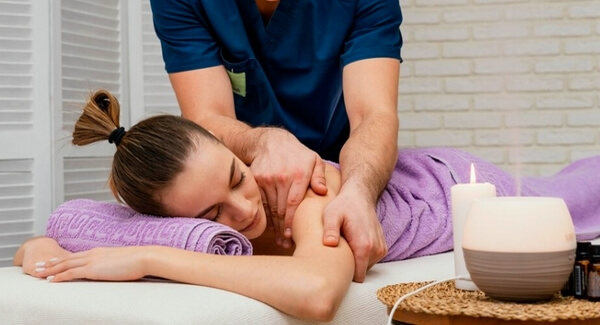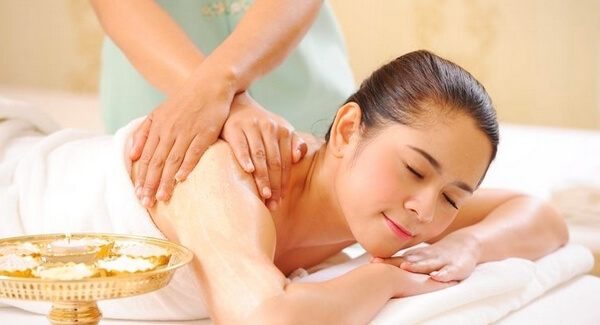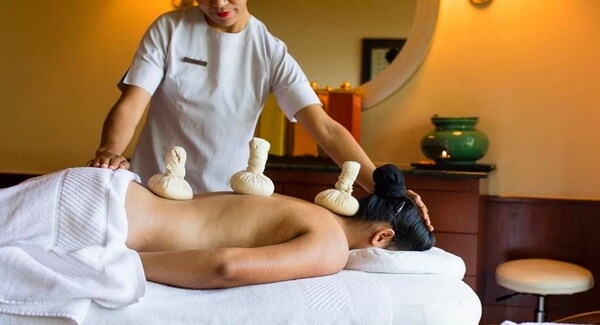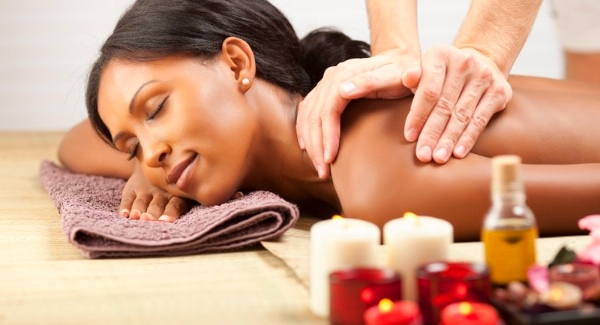Post-Thai Massage Care: Tips for Maximising the Benefits After Your Session

Athletic performance demands more than just training hard. Recovery, injury prevention, flexibility maintenance, and mental resilience all contribute to sustained excellence in sport. Whilst many athletes focus exclusively on strength, conditioning, and skill development, the wisest competitors recognise that how you care for your body between training sessions often determines long-term success more than the training itself.
Thai massage offers athletes a comprehensive recovery and maintenance tool that addresses multiple performance-limiting factors simultaneously. Through its unique combination of assisted stretching, deep pressure work, joint mobilisation, and energy balancing, Thai massage enhances flexibility, accelerates recovery, prevents injuries, reduces pain, and supports the mental resilience essential for competitive success.
This article explores how Thai massage specifically benefits athletes, examining the mechanisms through which it enhances performance and prevents breakdown, comparing it to other recovery modalities, and providing practical guidance for incorporating this ancient practice into modern athletic training programmes.
Why Athletes Need More Than Standard Training
Before exploring Thai massage's specific benefits, it's valuable to understand why recovery and maintenance practices matter so profoundly for athletic performance.
The Athletic Paradox
Training creates controlled damage. You stress muscles, challenge cardiovascular systems, and push physical limits to stimulate adaptation. This process requires adequate recovery between training bouts. Without sufficient recovery, you accumulate damage faster than you can repair it, leading to overtraining, injury, and declining performance despite continued effort.
Common Athletic Challenges
- Repetitive strain patterns: Sport-specific movements create characteristic imbalances
- Accumulated microtrauma: Intense training causes microscopic tissue damage that can accumulate
- Flexibility limitations: Many athletes develop restricted flexibility that limits efficiency
- Mental and nervous system stress: Competition and training create significant stress
- Inadequate recovery practices: Many focus only on active recovery whilst neglecting deeper restoration
How Thai Massage Benefits Athletic Performance
Thai massage addresses each of these challenges through specific mechanisms that directly enhance athletic capacity.
Enhanced Flexibility and Range of Motion
The mechanism: Thai massage's extensive use of assisted stretching provides flexibility benefits that self-stretching cannot match. A skilled therapist moves your body through ranges of motion you cannot access independently, progressively deepening stretches as tissues release.
Why it matters for athletes:
- Movement efficiency: Greater range of motion allows more efficient movement patterns
- Power production: Power movements require a full range of motion to generate maximum force
- Injury prevention: Flexible tissues tolerate sudden forces better than tight tissues
- Recovery from restrictions: Addresses old restrictions from previous injuries
Accelerated Recovery and Reduced Muscle Soreness
The mechanism: Thai massage's rhythmic compression and stretching stimulates blood and lymphatic circulation, accelerating the removal of metabolic waste. It modulates inflammation, releases trigger points, and activates parasympathetic responses supporting recovery.
Why it matters for athletes:
- Training consistency: Faster recovery allows more frequent quality training
- Reduced DOMS: Delayed onset muscle soreness becomes less severe
- Maintained training quality: Each session occurs when fresh enough to train effectively
- Prevention of overtraining: Regular recovery prevents the spiral toward overtraining
Injury Prevention Through Muscle Balance and Tissue Health
The mechanism: Thai massage restores muscle balance by releasing chronically tight muscles and mobilising restricted areas. Enhanced circulation maintains tissue quality, and systematic full-body work addresses compensatory patterns.
Why it matters for athletes:
- Fewer missed training days: Prevention dramatically outweighs treatment
- Longer careers: Consistent injury prevention extends competitive longevity
- Maintained technique: Prevention maintains proper movement patterns
- Peace of mind: Training with confidence supports better performance
Pain Relief and Management
The mechanism: Direct tissue release, improved circulation, nervous system modulation, parasympathetic activation, and addressing root causes all contribute to pain reduction.
Why it matters for athletes:
- Training through discomfort: Reduced baseline pain allows more comfortable training
- Medication avoidance: Natural pain management reduces reliance on medications
- Quality of life: Reduced chronic pain affects sleep, mood, and daily function
- Distinguishing pain types: Helps understand therapeutic discomfort vs. warning signs
Mental Resilience and Stress Management
The mechanism: Parasympathetic activation, stress hormone reduction, improved sleep, mindfulness cultivation, and enhanced body awareness all support mental wellbeing.
Why it matters for athletes:
- Competitive performance: Mental state significantly impacts performance under pressure
- Recovery optimisation: Sleep quality dramatically affects physical recovery
- Burnout prevention: Regular stress management supports long-term engagement
- Focus and clarity: Mental relaxation improves training focus and decision-making
Thai Massage vs. Other Recovery Modalities
Athletes have numerous recovery options. Understanding how Thai massage compares helps make informed choices.
Thai Massage vs. Sports Massage
Sports massage: Focuses on specific problem areas with deep tissue work and trigger point therapy.
Thai massage: Works the entire body systematically, incorporates extensive stretching, addresses energetic dimensions, and provides superior flexibility benefits.
Optimal approach: Many athletes benefit from alternating between both modalities.
Thai Massage vs. Foam Rolling
Self-myofascial release: Valuable, accessible, addresses surface restrictions.
Thai massage: Reaches deeper layers, includes assisted stretching impossible alone, addresses full-body patterns.
Complementary not competitive: Self-care maintains between professional sessions.
Thai Massage vs. Yoga
Yoga: Active practice building strength and flexibility.
Thai massage: Passive stretching often deeper than self-practice, no strength requirement, skilled guidance.
Synergistic: Both practices enhance each other's benefits.
Sport-Specific Applications
Different sports create different needs. Thai massage can be adapted accordingly.
Running and Endurance Sports
Common issues: Tight hip flexors, hamstrings, IT band, calves; lower back stiffness.
Thai massage focus: Extensive lower body stretching, hip mobilisation, IT band release, foot and ankle work.
Strength and Power Sports
Common issues: Muscle bulk limiting flexibility, joint compression, and imbalanced development.
Thai massage focus: Maintaining range of motion despite hypertrophy, joint decompression, and addressing imbalances.
Racquet Sports and Throwing
Common issues: Shoulder restrictions, rotational spine limitations, asymmetrical development.
Thai massage focus: Shoulder mobilisation, thoracic rotation, addressing left-right imbalances.
Cycling
Common issues: Hip flexor tightness, lower back strain, forward posture creating chest restrictions.
Thai massage focus: Hip flexor stretching, lower back release, chest and shoulder opening, neck work.
Incorporating Thai Massage into Training Programmes
Strategic incorporation maximises benefits whilst avoiding potential pitfalls.
Frequency Recommendations
- Building phase: Weekly or bi-weekly sessions
- Competition phase: Every 2-3 weeks
- Off-season: Weekly sessions ideal
- Recovery phase: More frequent sessions (even twice weekly)
Timing Relative to Training and Competition
- Avoid immediate pre-competition: Last session at least 3-4 days before important events
- Optimal recovery timing: 24-48 hours post-hard training or competition
- Maintenance sessions: Anytime during normal training weeks
- Listen to your body: Individual responses vary
Communication with Your Therapist
- Share your training schedule
- Discuss upcoming competitions
- Describe sport-specific demands
- Report responses to previous sessions
- Set appropriate goals for each session
Finding the Right Practitioner for Athletes
Not all Thai massage therapists have athletic population experience. Seek practitioners who:
- Understand athletic demands and training cycles
- Can adjust intensity appropriately for athletic bodies
- Communicate effectively about training schedules
- Continue learning about sports performance
For athletes in the UK seeking practitioners experienced with sports performance and recovery, you can find qualified Thai massage therapists in the UK who understand athletic needs and can tailor sessions accordingly.
Conclusion: The Competitive Edge
In elite sport, margins between success and failure narrow to fractions of seconds or single points. Every factor that enhances performance or prevents injury becomes potentially decisive. Thai massage offers multiple performance advantages simultaneously: improved flexibility and range of motion, faster recovery between training sessions, reduced risk of injury, effective pain management, and enhanced mental resilience.
Perhaps most importantly, Thai massage offers these benefits through a holistic approach that treats you as a complete person rather than simply a collection of muscles to be manipulated. This comprehensive attention to physical, energetic, and mental dimensions creates benefits that extend beyond isolated performance metrics to overall wellbeing and quality of life.
For the athlete seeking every possible advantage, Thai massage represents not an optional luxury but an essential component of comprehensive training programmes. Those who incorporate regular Thai massage consistently report not just improved performance but enhanced enjoyment of their sport, reduced fear of injury, and greater confidence in their body's resilience and capacity.
The ancient wisdom of Thai healing arts meets modern athletic demands in a practice that honours both tradition and performance science. Whether you're a weekend warrior seeking injury prevention, a competitive athlete chasing podiums, or a professional looking to maintain career longevity, Thai massage offers valuable support for your athletic journey.
Search Massage Therapists Near You.
More From Our Blog
Latest Blogs
Tips: How to Create the Perfect At-Home Mobile Massage Experience
Massage Therapy as a Career: Pathways to a Fulfilling Profession Globally
Building a Brand of Trust: Digital Age Strategies for Massage Therapists
The Future of Touch: How Technology is (and Isn’t) Changing Massage Therapy
A Global Look at Massage Therapy Qualifications - USA, Canada, Australia & Beyond
Beyond the Salon: Unique Massage Therapies You Never Knew Existed
The Power of Two: Exploring the Benefits and Etiquette of Couples Massage
Massage for Every Body: Celebrating Inclusivity in the Wellness Space
Why Men Are Embracing Professional Massage More Than Ever Before
The Healing Hands: Inspiring Stories of Massage Therapists Changing Lives
View All Blogs
Advertise with Massages Me and Grow Your Business!
Create an Ad within minutes & increase your earning potential as we connect you with more clients!



